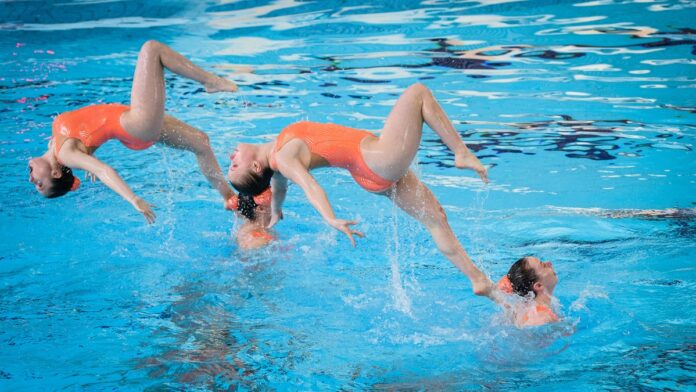Seven Steps to Better Swimming Technique
When improving your swimming technique, it is important to avoid overreaching. Overreaching happens when you reach your hand over your shoulder or head and swim in a zigzag motion down the pool. Instead, swim in a straight line to reach the end of the pool. This article will teach you how to avoid overreaching and improve your kick technique and front-quarter swimming. Keep reading to learn more.
Tend to your core muscles
While good body posture is a critical part of good swimming technique, many swimmers neglect to engage their core muscles. While we’ve all seen Olympic swimmers with lean, ripped “six-packs,” this strength training rarely affects the pool. Instead, core strength training helps swimmers maintain a straighter posture and improves their swimming technique by strengthening the lower back and spine muscles.
Swimmers’ core muscles are more powerful than we realize. Yet many of us don’t use them enough and don’t even feel them. Strong swimmers use their hips and shoulders as a unit when swimming, allowing them to rotate smoothly. Similarly, weak swimmers rely on their shoulders more than their hips. By exercising your core muscles, you’ll be able to develop more powerful strokes, which will help you to swim faster and more efficiently.
Maintain front quadrant swimming
The front quadrant stroke is one of the most effective methods for swimmers, especially when part of the body is not propelling forward. By holding the arm out in front, the swimmer introduces a tight streamline and reduces drag while allowing for a good catch and high elbow. Of course, not everyone can swim like Sun Yang and Jordan Wilimovsky. The technique that works best for you is unique to your body type.
The best way to improve your swimming technique is to learn and practice using a drill to maintain your front quadrant position throughout the swim. This drill is highly demanding, and two to four sets of 50 meters are often enough. It would help to practice this technique several times a week until it becomes second nature. You may want to try it out yourself before hiring a swimming instructor. Try this technique on the pond or lake to improve your swimming and keep your head and hips high.
Improve your kick technique
Several factors can affect the efficiency of your kick. Kicks are a coordinated part of swimming, involving the entire body. Arm strokes and kicks transfer energy from the core to the hips. Propulsive kicks are most efficient when maintaining a high leg angle and having strong support musculature. Poor technique can negate the propulsion gained by kicking too shallowly or wide. Developing ankle and hip flexibility will help you improve your kick technique.
Proper timing is crucial for a well-balanced kick. A kick that’s timed right prevents’snaking’ through the water. While swimming, the smallest kick movement keeps your core engaged and keeps your hips and legs from dropping too deep. The top swimmers often glide through the water with hardly any kick movement. They do so by using their kick when they’re moving slowly.
Avoid pitfalls of drills.
You might think that non-stop drilling is the answer to your swimming woes. Non-stop drill work can work against you. One technique that works to combat the pitfalls of swimming drills is to alternate sets of 25s of drill and swimming. But it is important to do so properly to avoid throwing your body out of alignment. Moreover, swimming drills should help you overcome common problems and improve your technique.
One of the most common mistakes swimmers make is crossing their arms midway. This technique is inefficient and may even lead to shoulder injuries. As a result, aim for the 11th and first position on the clock to avoid this blunder. If you’re unable to swim this way, you may stretch your elbow as you try to make your push. It’s crucial to keep your elbow straight.
Keep your head in line with your body.
One of the most fundamental aspects of swimming is maintaining a streamlining. A streamline will reduce drag. Keep your biceps close to your ears and your legs tight together to maintain a streamline. Excess space between your body and head will slow you down. Your head position is an important part of your overall body position. To swim efficiently, keep your head still. You should align your hairline with the water’s surface when swimming freestyle.
Keeping your head in line with your body is essential for good swimming techniques. Most swimmers over-rotate their heads when they breathe, which throws their entire body out of alignment. A US Olympic coach and long-time coach of the world’s greatest swimmer, Bob Bowman, explained that the correct way to breathe is to keep the head in line with the body. Try to breathe with one goggle in the water and rotate the head in line with your body to practice this technique.
Avoid rushing your breath.
One of the worst things you can do when swimming is to rush your breath. Your breath should be a steady stream of bubbles in the water to breathe correctly. Swimming with too much head movement can result in hyperventilation and disorientation. During each phase of your stroke, take a breath and then relax. Try to breathe every three strokes. You can control how fast you breathe during each phase.
When swimming, try to think about the position of your body. If you’re rushed to breathe, you’ll be prone to sinking legs, making it more difficult to stay upright. By staying in the proper position, your body will be able to float and will feel comfortable in the water. Try to keep your head above water and your arms close to your body. Practice horizontal breathing so that you can improve your swimming technique.























